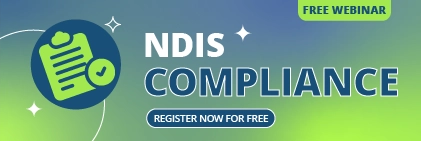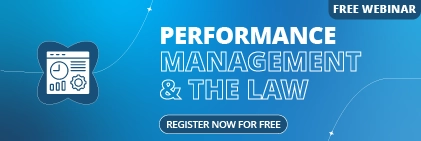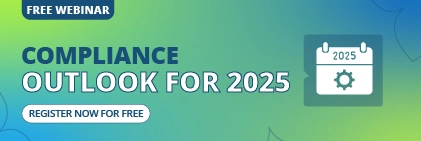Introduction: What’s Changing in Australian Compliance?
The Australian compliance landscape is experiencing significant transformation. Regulatory bodies are introducing new laws and enforcement mechanisms spanning payroll, data privacy, cybersecurity, environmental, and workplace safety regulations are constantly changing. For businesses of all sizes – from small startups and mid-sized enterprises to large organisations – these changes bring more complex compliance obligations and higher risks for non-compliance.
With over 600 Australian businesses already trusting Sentrient for managing their HR, compliance, and Governance, Risk & Compliance (GRC) needs, 2025 demands a robust, user-friendly, and integrated compliance system. Sentrient’s cloud-based platform offers a fast, reliable way to navigate evolving legislation, helping organisations stay audit-ready and mitigate risks effectively.
What Are Compliance Risks and Why Are They Important?
Compliance risks refer to the potential legal, financial, operational, and reputational harms a business may face if it fails to meet applicable laws, regulations, standards, or internal policies. These risks span a variety of domains including workplace safety, wage laws, data privacy, environmental regulations, and anti-money laundering rules.
Effective compliance management not only prevents hefty fines and penalties but also promotes operational continuity, employee wellbeing, and trust among customers and partners. Leveraging integrated tools like Sentrient’s Compliance Management System ensures organisations streamline these risks through automated workflows, preloaded legally endorsed policies, and continuous employee training.
Key Regulatory Changes in 2025: Major Themes & Timeline
The regulatory focus in 2025 covers a broad spectrum:
- Payroll & Wage Theft
- Cybersecurity & Data Privacy
- Environmental, Social, and Governance (ESG) & Climate Reporting
- Anti-Money Laundering (AML) Expansion
- Workplace Safety & Psychosocial Hazards
- Consumer Protection & Scam Prevention
- Technology & Digital Sector Compliance
- Modern Slavery & Supply Chain Transparency
Below is a timeline summarising critical deadlines and affected sectors:
| Reform Area | Deadline/Date | Who’s Affected |
|---|---|---|
| Wage Theft Laws | 1 Jan 2025 | All Australian Employers |
| Climate Financial Disclosures | 1 Jan 2025 | Large Corporations, Financial Institutions |
| Cyber Security Act | Nov 2024 / Jan 2025 | Critical infrastructure, IoT device suppliers |
| Scam Prevention Laws | Feb 2025 | Banks, Telecoms, Digital Platforms |
| Psychosocial Hazard Laws | 1 Dec 2025 | All Employers |
| AML/CTF Tranche 2 | July 2026 | Real Estate, Legal, Accounting, Precious Metals |
This timeline sets a high bar for compliance readiness and proactive risk management.
1. Wage Theft, ATO, and Payroll Compliance in 2025: What You Must Know
Wage theft has escalated to a national criminal offence starting 1 January 2025. Employers must ensure employees receive full entitlements including minimum wages, overtime, penalty rates, leave loading, and superannuation. Here’s what changed and what remains critical:
- Wage Theft Penalties: Deliberate underpayment, falsifying records, or withholding entitlements can lead to criminal prosecution, significant fines, and, in severe cases, imprisonment of responsible officers.
- ATO Compliance & AI Audits: The Australian Tax Office is using advanced AI and data-matching technology to scrutinise payroll anomalies, incorrect rental deductions, inappropriate crypto asset claims, and mixing personal with business expenses. Regular Single Touch Payroll (STP) reporting integrated with “PayDay Super” enforces concurrent wage and super payments.
- Casual Conversion Laws: Employers must now automatically make offers to casual staff to convert after 12 months of work, with strict compliance documentation demands.
- Right to Disconnect Legislation: This new law compels companies to adopt formal policies clarifying when employees are not required to engage in work communications outside agreed hours, enhancing work-life balance compliance.
How Sentrient Helps:
Sentrient’s HR Management System offers automated payroll compliance checks, onboarding management processes that capture employment status accurately, and audit-ready documentation for periodical reviews and external audits.
2. Cybersecurity and Data Privacy: Essential Regulatory Overhauls in 2025
Australia’s Cyber Security Act 2024 builds on evolving national cyber strategies:
- Mandatory Incident Reporting: Certain organisations must report ransomware incidents and cyber extortion payments to the Australian Cyber Security Centre (ACSC) within 72 hours. Failure to comply results in penalties.
- Security for Internet of Things (IoT) Devices: Device manufacturers and third-party suppliers must now meet stringent security standards to reduce risks of cyber vulnerabilities in critical sectors such as healthcare, energy, and finance.
Privacy Act Amendments:
- OAIC (Office of the Australian Information Commissioner) gains expanded powers to enforce breaches and impose higher fines.
- Breach notification timelines are significantly shortened, requiring rapid response frameworks.
- Consent protocols are tightened, especially around digital marketing and cross-border data flows.
- Digital platforms have enhanced obligations to protect user data and prevent misuse of information.
Action Points:
Businesses are urged to implement incident reporting mechanisms and embed staff training concerning cybersecurity and privacy obligations.
Sentrient Advantage:
Sentrient’s Incident/Breach/Whistleblower Reporting System enables automated logging, instant alerts, and ongoing audit trails to document compliance actions seamlessly.
3. ESG, Climate, and Greenwashing: New Compliance Mandates
2025 moves ESG from best practice to mandatory compliance:
- Climate Financial Disclosures: Aligning with AASB S1/S2 and IFRS sustainability standards, large entities must report on Scope 1 (direct), Scope 2 (indirect energy), and Scope 3 (value chain) greenhouse gas emissions. The phased rollout increases reporting burdens over coming years, especially in energy, resources, financial, and manufacturing sectors.
- ASIC and ACCC Enforcement: Regulatory bodies are actively policing greenwashing — misleading environmental claims with prospects of multi-million-dollar penalties and personal liabilities for company directors.
- Board Accountability: Directors must ensure ESG compliance is embedded at board level with transparent reporting and governance.
Sentrient GRC Tools feature pre-built templates and policy signoff tracking that simplify ESG management and foster continuous improvement.
4. Anti-Money Laundering Compliance: Expanding Scope and Stringency
AUSTRAC’s “Tranche 2” reforms (effective July 2026) widen AML/CTF obligations by including approximately 80,000 additional businesses such as real estate agents, lawyers, accountants, and dealers in precious metals and stones under strict scrutiny.
Key requirements include:
- Updates and documentation of AML/CTF programs.
- Performing independent compliance reviews.
- Annual submission of enhanced compliance reports.
Failure to comply may result in deregistration, significant fines, and reputational harm.
Real-World Example:
An accounting practice utilising Sentrient’s Compliance Management System can systematically review client onboarding procedures, staff training logs, and transaction monitoring reports to meet AML expectations.
5. Workplace Safety and Psychosocial Hazards: Employer Obligations in 2025
- New Psychosocial Hazard Legislation: Covering risks such as workplace bullying, harassment, and psychological health, national standards require employers to assess, mitigate, and manage mental health risks by 1 December 2025.
- Sexual Harassment and Positive Duty: Employers are legally obliged to take proactive measures rather than reactive responses.
- State Implementation Variations: Business owners must be aware of state-specific nuances and ensure compliance accordingly.
Sentrient’s e-learning content and risk management modules assist in training, hazard identification, and real-time incident reporting to remain compliant.
6. Consumer Protection & Scam Prevention: New Laws and Enforcement
From February 2025, the Scams Prevention Bill introduces:
- Mandatory scam risk assessment and reporting requirements within 24 hours.
- Sector-specific obligations primarily targeting banks, telecommunications providers, and online platforms.
- Penalties reaching up to AUD 50 million for non-compliance.
- Penalties reaching up to AUD 50 million for non-compliance.
Sentrient’s compliance checklists, onboarding controls, and reporting tools help organisations tighten processes and lower exposure to fraud and scam-related penalties.
7. Technology & Digital Sector Compliance: Responsible AI and Online Safety
- Introduction of Responsible AI frameworks mandating transparency, risk mitigation, and ongoing auditing aligned with OECD and NIST guidelines.
- Financial sector compliance includes Digital Operational Resilience Act (DORA) adherence (if applicable).
- Online content providers must implement content moderation standards and comply with export controls.
Sentrient’s GRC platform enables risk assessments and policy management across complex third and fourth-party vendor networks.
8. Modern Slavery and Supply Chain Transparency: Meeting Elevated Standards
- 2025 mandates enhanced due diligence, supplier audits, and transparency reporting.
- Companies must incorporate geopolitical risk contingency planning.
- Transparency extends to all tiers of supply chains, emphasising ethical sourcing and labour standards.
Prebuilt policy templates and automated audit trails by Sentrient lessen administrative load and enhance compliance assurance.
Industry-Specific Compliance Challenges in 2025
| Industry | Key Regulatory Compliance Priorities |
|---|---|
| Retail | Data privacy, modern slavery reporting, supply chain transparency |
| Health & Aged Care | Patient privacy, NDIS compliance, quality audits |
| Financial | APRA & ASIC enforcement, DDO obligations, superannuation reforms |
| Energy & Resources | Climate disclosures, greenwashing risks, operational safety |
Each sector faces unique challenges requiring both tailored strategies and the adoption of universal compliance best practices.
Penalties, Enforcement, and Director Liability: What Has Changed?
- Collaboration among regulators has increased, escalating enforcement actions.
- Fines and penalties have risen markedly.
- Directors and executives face personal accountability, including risk of fines and imprisonment for breaches.
Sentrient’s audit-ready reports, complete with detailed compliance logs and alerts, support executive risk management and evidence-based defence in disputes.
Compliance Implementation & Best Practices: Your 6-Step Roadmap
Achieving compliance requires a strategic, methodical approach:
- Legal Risk Assessment: Comprehensive audits of all regulatory areas identifying gaps and weaknesses.
- Digital GRC Implementation: Deploy platforms like Sentrient for incident management, automated workflows, and seamless policy sign-off.
- Policy Updates & Document Control: Use Sentrient’s library of legally endorsed documents updated for 2025 legislation.
- Comprehensive Training Programs: Deliver bite-sized, engaging e-learning content for ongoing workforce capability development.
- Monitoring & Reporting: Establish real-time dashboards for compliance metrics, incident tracking, and leadership reporting.
- Board Engagement: Ensure governance includes compliance oversight, external advisory roles, and timely strategic reviews.
What’s Coming in 2025–2026? The Compliance Pipeline
Looking forward, the following developments will further shape compliance obligations:
- AML/CTF Tranche 2 expansion enforcement.
- Nationwide rollout of PayDay Super.
- More rigorous climate/ESG reporting and enforcement.
- Regulations governing Artificial Intelligence, quantum encryption, and blockchain technologies.
- Closer alignment with international (OECD, UK, EU, US) standards, helping Australian businesses stay competitive and compliant globally.
Stay ahead by leveraging expert insights and tech solutions through platforms like Sentrient.
Conclusion: Strategic Recommendations for 2025 Compliance
Australian businesses must adapt fast to the evolving compliance landscape by embedding technology-driven, people-centric compliance frameworks. Sentrient’s integrated HR, compliance, and GRC software is designed for Australian workplaces, combining rapid deployment, comprehensive pre-built content, and audit-ready reporting.
Take control of your compliance journey for 2025 – reduce risks, meet obligations confidently, and build a culture of trust.
Frequently Asked Questions
1. What are the main compliance risks for Australian businesses in 2025?
Cybersecurity, wage theft, climate reporting, AML expansion, and psychosocial hazards top the list.
2. Which new laws should I prioritise first?
Focus on wage theft (effective 1 Jan), climate disclosures (1 Jan), scam prevention (Feb), and psychosocial hazards (Dec).
3. How can technology improve my compliance efforts?
Automated solutions like Sentrient reduce human error, streamline workflows, and provide audit-ready documentation.
4. What penalties apply for wage theft or non-compliance?
Serious breaches can lead to criminal charges, substantial fines, and imprisonment.
5. Are small businesses subject to new climate and privacy rules?
Many rules apply broadly, though some ESG obligations target larger entities; all businesses should verify their obligations.
6. How do I prepare for upcoming 2025-2026 compliance changes?
Conduct regular risk assessments, deploy compliance software, update policies, and maintain staff training.
7. Where can I find reliable compliance updates?
Government regulators’ websites, industry associations, and Sentrient’s compliance blog are trustworthy sources.





